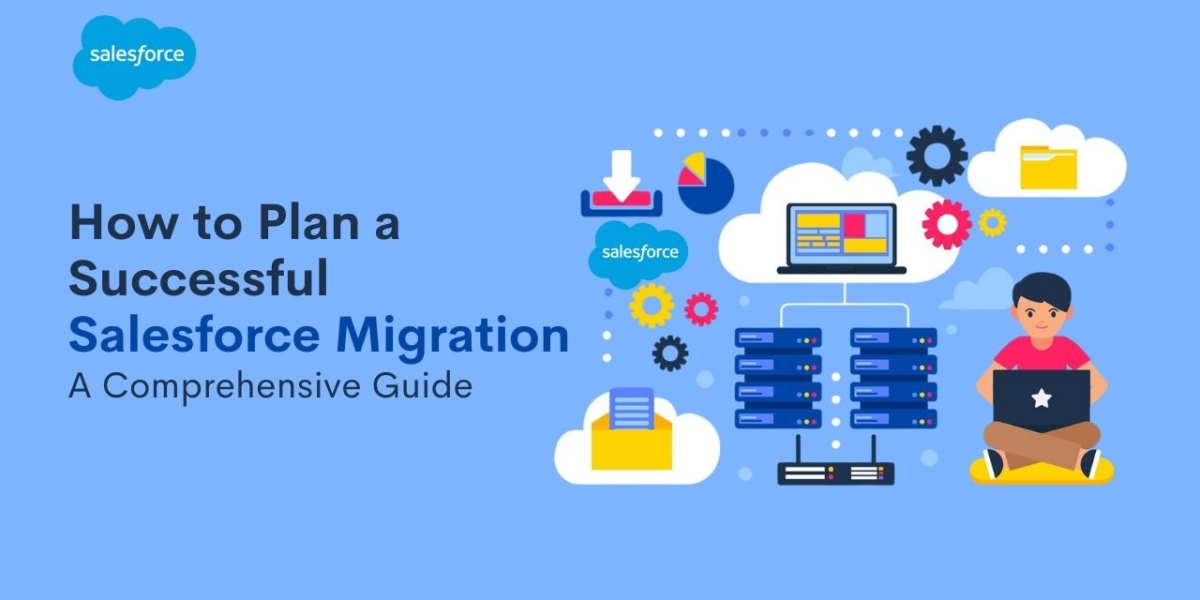Salesforce, a leading cloud-based customer relationship management (CRM) platform, empowers businesses to streamline operations, manage customer interactions, and boost sales and marketing efforts. However, as businesses evolve and their needs change, migrating to a new Salesforce instance or org becomes necessary. This process, while crucial, can be complex and requires meticulous planning to ensure a smooth transition.
This article serves as a comprehensive guide for navigating a successful Salesforce migration, outlining key steps, considerations, and best practices.
Understanding the Need for Migration
Several factors can necessitate a Salesforce migration:
Outgrown Existing Org: As a business grows, its data volume and complexity might exceed the capacity of the current Salesforce org. This can lead to performance issues and hinder functionality.
Mergers and Acquisitions: Merging with another company often necessitates consolidating data from multiple Salesforce organizations into a single platform.
Data Security Concerns: Upgrading to a newer Salesforce instance can address evolving security threats and ensure optimal data protection.
Functional Limitations: The existing Salesforce org might lack functionalities required by the business, prompting a migration to a more advanced edition or a custom-developed solution.
Key Steps in Planning a Successful Salesforce Migration
Define Project Goals and Scope: Clearly define the objectives of the migration. What functionalities do you want to achieve with the new org? What data needs to be migrated? Determining these objectives sets the stage for the entire process.
Assemble the Migration Team: Form a dedicated team with representatives from various departments, including IT, sales, marketing, and operations. Each member brings valuable insights and ensures all stakeholders are involved.
Assess the Current State: Conduct a thorough evaluation of the existing Salesforce org, including data volume, configurations, customizations, integrations, and user adoption. This assessment provides a baseline for planning and identifying potential challenges.
Choose a Migration Strategy: Select the most suitable migration approach based on your needs. Common options include:
Full Migration: Transferring all data and configurations to a new org.
Partial Migration: Migrating specific data sets and functionalities.
Big Bang Migration: Migrating everything at once, requiring downtime.
Phased Migration: Migrating data and functionalities in stages, minimizing disruption.
Data Cleansing and Preparation: Cleanse existing data to eliminate duplicates, inconsistencies, and outdated information. This ensures data integrity and improves the success rate of the migration.
Map Data Fields: Map data fields from the source org to the target org, ensuring accurate data transfer and proper alignment with the new system's structure.
Configure the Target Org: Set up the target Salesforce org, including user accounts, security settings, workflows, automation rules, and custom fields, meticulously replicating the desired functionalities.
Testing and User Training: Conduct comprehensive testing of the migrated data and functionalities to identify and resolve any issues before user adoption. Additionally, provide thorough training to users on the new system to ensure a smooth transition.
Go-Live and Post-Migration Support: Execute the migration according to the chosen strategy, ensuring a smooth transition with minimal disruption to business operations. Provide ongoing support to address any post-migration issues and refine the new system based on user feedback.
Best Practices for a Successful Migration
Engage a Salesforce Migration Service Provider: Consider partnering with a Salesforce Migration Service provider. Their expertise can streamline the process, mitigate risks, and ensure successful data transfer and system configuration.
Leverage Salesforce Migration Tools: Utilize Salesforce's native migration tools, such as the Data Loader, Salesforce Workbench, or third-party migration tools, to automate data transfer and mapping tasks.
Maintain Clear Communication: Establish clear communication channels between team members, stakeholders, and the migration service provider (if applicable). Regular updates and transparent communication are crucial for managing expectations and addressing concerns throughout the process.
Document the Process: Document each step of the migration process, including decisions made, configurations implemented, and lessons learned. This documentation serves as a valuable reference point for future reference and troubleshooting purposes.
When to Consider a Customized Salesforce Development Company
While Salesforce offers extensive capabilities, specific business needs might necessitate additional functionalities or custom integrations. In such scenarios, partnering with a Customized Salesforce Development Company can be highly beneficial.
read the full blog here: https://dmarket360.com/how-to-plan-a-successful-salesforce-migration/









